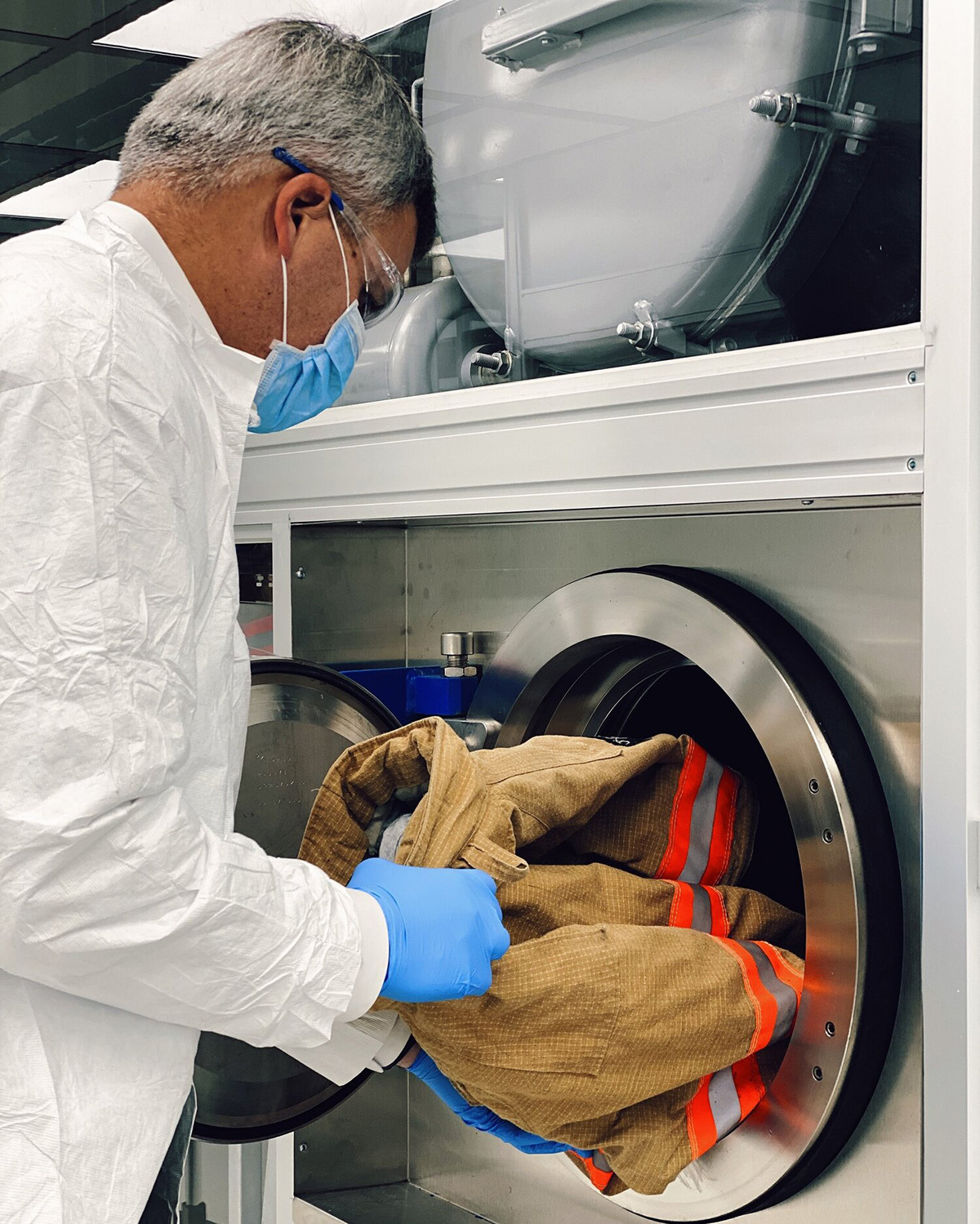By: Emergency Technical Decon Team
Firefighters, the fearless heroes who battle flames and protect our communities, face hidden dangers in the line-of-duty. Among these dangers is the risk of hazardous chemical exposure, many of which are classified as carcinogens.
We aim to emphasize the importance of effective prevention measures through raised awareness about the dangers firefighters face and their association with cancer. It’s our goal as the Emergency Technical Decon team to drive innovation and educate the industry about the power of liquid CO2 cleaning technology.
Line-of-Duty Carcinogens
Firefighters encounter a multitude of chemicals during their work, each carrying its own set of risks. Understanding these hazardous substances is crucial to fully grasp the potential health implications. Let’s explore some common chemicals that firefighters may be exposed to and their associated dangers:
- Benzene: Found in petroleum-based fuels, plastics, and rubber products, benzene is a known carcinogen. Prolonged exposure to benzene is linked to the development of leukemia and other blood-related cancers. Firefighters may come into contact with benzene through fuel spills or during firefighting operations involving burning plastics.
- Formaldehyde: This chemical is present in building materials and is released during combustion processes. Firefighters are exposed to formaldehyde when they encounter smoke generated from burning materials containing this compound. Prolonged exposure to formaldehyde can lead to respiratory issues and an increased risk of various cancers, including lung cancer.
- Polycyclic Aromatic Hydrocarbons (PAHs): Produced during the incomplete combustion of organic materials, PAHs are present in smoke and soot. Firefighters are exposed to PAHs primarily through inhalation and skin contact during firefighting operations. Exposure to PAHs has been associated with an increased risk of skin, lung, bladder, and gastrointestinal cancers.
- Asbestos: Although its use has significantly declined, older structures may still contain asbestos. Inhalation of asbestos fibers can lead to serious health problems, including lung cancer and mesothelioma—a rare and aggressive cancer primarily caused by asbestos exposure. Firefighters face the risk of asbestos exposure during firefighting operations and in older buildings that have not undergone proper abatement procedures.
- Hydrogen Cyanide (HCN): HCN is released when synthetic materials, such as plastics, burn. Firefighters may encounter HCN when battling fires in structures or vehicles containing these materials. Exposure to high HCN concentrations can have severe effects on the cardiovascular and respiratory systems, potentially leading to fatal outcomes.
- Lead: Firefighters may encounter lead in older buildings or during firefighting activities. Lead-based paints, pipes, and contaminated soil are common sources of exposure. Prolonged exposure to lead can result in neurological damage and various types of cancer. Firefighters should take precautions to minimize lead exposure, especially during renovation or demolition operations involving older structures.
Firefighters and Cancer
The correlation between firefighting and cancer is a matter of great concern. Statistics from the Centers for Disease Control and Prevention (CDC) demonstrate how firefighters face a significantly higher risk of developing several types of cancer compared to the general population. Let’s recap some key facts:
- The incidence of lung cancer among firefighters is 28% higher than that in the general population. Smoke inhalation and exposure to toxic substances during firefighting operations contribute to this increased risk.
- Firefighters have double the risk of developing mesothelioma, a cancer strongly associated with asbestos exposure. This risk arises from encountering asbestos-containing materials during firefighting operations, particularly in older structures.
To mitigate these risks, it is crucial for firefighters to prioritize disease control and prevention. This includes implementing stringent occupational safety and health protocols, undergoing regular cancer screenings, and utilizing appropriate protective equipment, such as turnout gear and respiratory masks. Fire departments and organizations must prioritize firefighter safety by providing comprehensive training on chemical hazards, emphasizing proper decontamination procedures, and promoting a culture of health and wellness within the fire service.
CO2 Cleaning on the Frontlines
In the quest for firefighter safety, ETD’s liquid CO2 cleaning technology offers a promising solution. Liquid CO2 cleaning effectively removes contaminants from turnout gear, helmets, boots, and other protective equipment. This cleaning method utilizes liquid carbon dioxide in a high-pressure and temperature-controlled system, ensuring thorough cleaning without compromising the integrity of the gear. By employing liquid CO2 cleaning, firefighters can minimize the chances of chemical absorption and reduce the risk of exposure to hazardous substances.
To explore further details on how liquid CO2 cleaning contributes to firefighter safety, we encourage you to visit ETD’s website for a comprehensive breakdown. By adopting advanced technologies and best practices, we can enhance the protection and overall health of our brave firefighters.
Understanding the chemicals firefighters are exposed to is crucial to raising awareness about the occupational risks they face, particularly the increased likelihood of developing cancer. By implementing robust prevention measures, promoting regular health screenings, and leveraging advancements like liquid CO2 cleaning, we can work towards safeguarding the well-being of our firefighters.
Join us in prioritizing firefighter health and safety and create a safer future for those who selflessly protect us.



